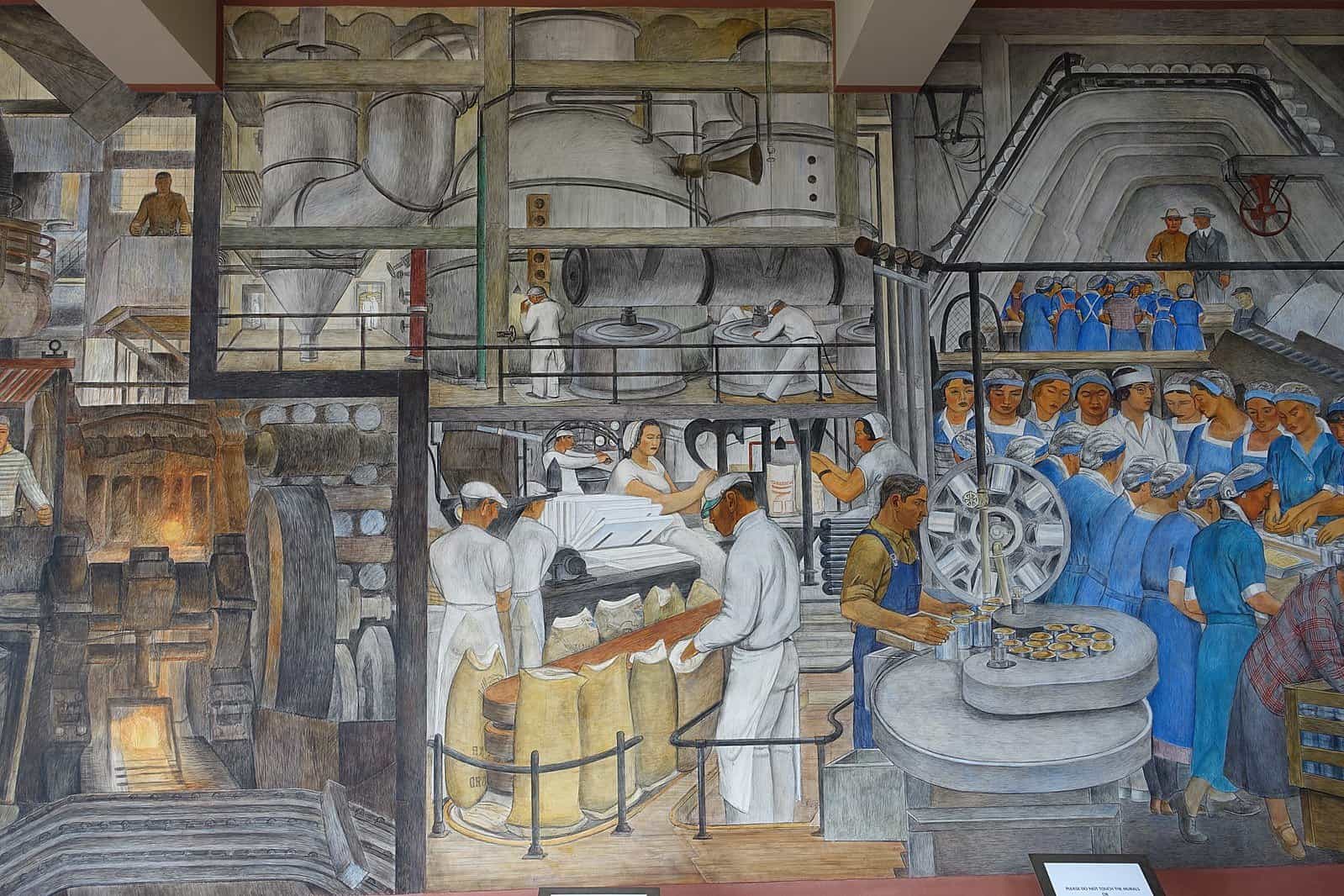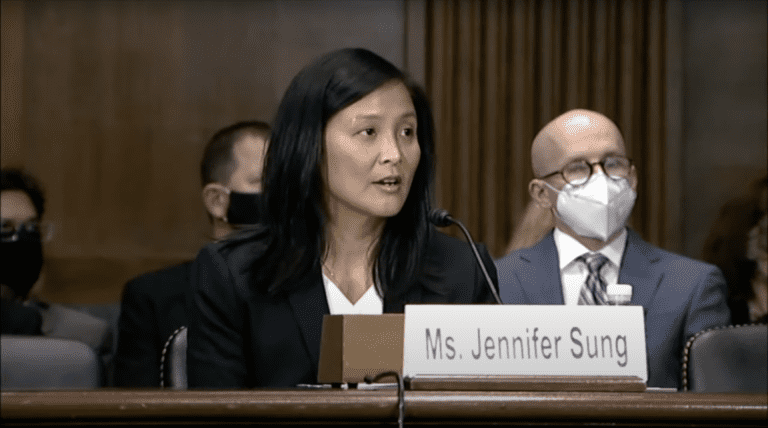Annie Hollister is an Honors Attorney at the U.S. Department of Labor and an alumna of Harvard Law School.
The Covid pandemic has had an enormous impact on America’s food systems. Workers in the food service industry—servers and bartenders, chefs and dishwashers—account for an estimated sixty percent of jobs lost since the pandemic reached the United States. Of the roughly one million food businesses operating in the country before the pandemic caused wide-spread closures, roughly twenty percent are expected to never recover, meaning millions of workers will be unable to get their jobs back. And Covid has done more than decimate national employment levels: it has also exacerbated existing safety problems in food-related industries and disrupted our national supply chain.
Last month, celebrity chef José Andrés proposed a response to this crisis: a federal food-jobs program to employ furloughed food workers to serve those communities hardest hit by the pandemic. Under Andrés’s plan, federal dollars could be used to employ laid-off food service workers to prepare and deliver meals for the elderly, the housing insecure, and families who are no longer able to make ends meet. Andrés described this proposed program as “a W.P.A. to feed America,” after President Roosevelt’s legendary employment and infrastructure program.
Andrés’s proposal is an important one, and both nonprofits (including Andrés’s, World Central Kitchen) and local governments have begun to implement versions of it. But the real Works Progress Administration provides a blueprint for a much broader federal jobs program, both in scope and in long-term impact. Throughout the Great Depression and into the early years of World War II, the W.P.A. employed millions of out-of-work Americans to fill community needs. What would it mean, then, to create a true W.P.A. to feed America—not just for the present moment, but for the future of America’s food systems?
One starting point for this project is the W.P.A. itself. When the program was established, its administrators saw it as an opportunity to connect unemployed workers’ skills with gaps in the nation’s infrastructure. One initiative allowed the federal government to purchase surplus food for preservation. The program employed workers to can, freeze, dry, and brine 11.5 million pounds of excess produce and dairy products, and worked with both farms and “small scattered gardens” to ensure that schools had access to fresh vegetables year-round. Today, the ruptured supply chain of shuttered restaurants, hotels, and schools has led to many farmers discarding millions of pounds of perishable food while charitable food banks are overwhelmed with demand. A large-scale program preserving surplus food, as the W.P.A. did, or creating value-added products such as frozen meals, could deploy thousands of food workers to bridge the gap between these twin needs.
A federal food jobs program could address long-term infrastructure needs as well. A key W.P.A. project built new roads to connect farmers with markets. While market roads are a less pressing matter today, a new W.P.A. could fill other gaps in the farm-to-market pipeline. A shortage of safe slaughterhouses creates severe bottlenecks for farmers who raise livestock, and working conditions in many large facilities have become increasingly dystopian. A federal jobs program could address both of these problems through developing smaller, localized processing plants that foster better working conditions while increasing farmers’ access to an essential link in the path from farm to market. And then there are the markets themselves. Access to retailers that provide fresh and unprocessed food is notoriously segregated by race and income. A food-focused W.P.A. could establish, staff, and develop sourcing plans for markets serving communities that have been denied access to an affordable and healthy food supply.
These projects account for bread. But what about roses? The real W.P.A. employed people not just to do necessary work, but unnecessary work as well—to perform jobs that were not essential, perhaps, but that created a more beautiful world. José Andrés’s initial vision touched on this—Andrés called his vision for a federal jobs program “America Eats Now,” in honor of “one of [the W.P.A.’s] food programs.” But America Eats! (the exclamation point was part of the title), was not a food program per se. Part of Federal Project No. 1—the W.P.A.’s program for artists and writers—America Eats! hired teams of novelists (including Zora Neale Hurston), photographers, and journalists to produce “an account of group eating as an important American institution.” The project was never completed, and the original America Eats! materials remain scattered in various archives around the country.
Could America Eats! be revived? Imagine teams of laid-off food workers sorting through the project’s archives to collect, interpret, test, and adapt recipes to suit modern kitchens. And what would channeling the spirit of the project look like today? A new federal jobs program could work with existing projects that use foodways research—that is, research about our cultural, social, and economic relationships to food—to enrich communities. Before the project was stalled by Covid, the nonprofit North American Traditional Indigenous Food Systems (NāTIFS), founded by James Beard-award-winning chef Sean Sherman, was in the process of developing the Indigenous Food Lab, a nonprofit restaurant dedicated to researching indigenous foodways and working with tribal communities to improve access to indigenous foods. Opening a customer-focused restaurant may not be feasible for the foreseeable future, but the Indigenous Food Lab’s long-term vision of developing indigenous community kitchens while researching and teaching the “identification, gathering, cultivation, and preparation” of indigenous foods is precisely the kind of project that could employ furloughed food workers while creating long-term impact in affected communities.
Central to any federal jobs program, however, must be an understanding that all Americans need relief in the current crisis. The food service and care industries employ more immigrant workers than most other American industries; in food service, as many as twenty percent of those workers may be undocumented. The federal government’s one-time payments and expansion of unemployment benefits apply only to those who are documented to work within the United States. Even those undocumented workers who remain employed may face barriers to relief if their employers receive funds from the federally-sponsored Payroll Protection Plan, which requires employers to verify social security numbers for covered workers. For any federal relief program to serve the American people, it must accommodate those workers who have been and remain essential to the nation’s economy.
Today is the W.P.A.’s 85th birthday. It finally became a reality in May of 1935, more than five years after the start of the Great Depression. We should take the program’s long runway as a call to start now to imagine what a new W.P.A. could be. A jobs program of this scale may seem infeasible in the present moment, but political moments are not forever (just ask Herbert Hoover). And the vast scope of the W.P.A.—from cooking school lunches to planting oysters in the Chesapeake Bay—should remind us that in times of crisis, ideas that once might have seemed impractical or even fanciful can suddenly become necessary.










Daily News & Commentary
Start your day with our roundup of the latest labor developments. See all
December 22
Worker-friendly legislation enacted in New York; UW Professor wins free speech case; Trucking company ordered to pay $23 million to Teamsters.
December 21
Argentine unions march against labor law reform; WNBA players vote to authorize a strike; and the NLRB prepares to clear its backlog.
December 19
Labor law professors file an amici curiae and the NLRB regains quorum.
December 18
New Jersey adopts disparate impact rules; Teamsters oppose railroad merger; court pauses more shutdown layoffs.
December 17
The TSA suspends a labor union representing 47,000 officers for a second time; the Trump administration seeks to recruit over 1,000 artificial intelligence experts to the federal workforce; and the New York Times reports on the tumultuous changes that U.S. labor relations has seen over the past year.
December 16
Second Circuit affirms dismissal of former collegiate athletes’ antitrust suit; UPS will invest $120 million in truck-unloading robots; Sharon Block argues there are reasons for optimism about labor’s future.